Old Master Mystery
Have you ever been absolutely compelled to buy something? To where the piece spoke to you? Drew you in. Took hold of you and wouldn't let go. Well, it happened to me. This is a story about my introduction to the world of Old Master painting.
It was a very early Saturday morning and I was checking out the offerings of a dealer friend from Massachusetts. Looking over his inventory and seeing much that I liked, but nothing I loved until I came across a painting that was still in its box. I asked about it and he commented to me that he had just purchased it the night before from another dealer. Who doesn't like fresh merchandise? So I asked to see it and he said, "Oh, Heather, that's not for you. It's an old painting of Joan of Arc". I asked again and he unwrapped the painting. That was all it took. Other dealers began to circle around me as I held up the painting for examination. Each with their own commentary on the age, subject, condition and so on. Each giving me a quizzical look wondering why I'd be looking at it. As I was known primarily for dealing in picture frames, the frame on this painting wasn't much to speak of. A Dutch style moulding dating from the early 1900's. Still I held on to it. Knowing that if I loosened my grasp, one of my associates could swoop in and grab the painting for themselves. So I held on, or rather it held me. Without haggling, I paid my friend and hopped in the first taxi I could hail and headed downtown to my apartment. And so began my project.
First would come a true assessment of the painting and that could only come from seeing it out of the frame and from a proper cleaning. My painting restorer is an expert in Old Masters (little did I know) and he was pleased to take on the project. After seeing the work out of the frame and a proper cleaning, it turned out to be a lot older than any of us suspected. Rather than being from the 1800's and a Continental portrait of Joan of Arc, it was from the 1500's and an Italian portrait of Saint Michael. Wow! Three hundred years earlier and a different sex!
Saint Michael is portrayed in a bejeweled armor, holding the balance scale, his sword and shield by his side. Looks like we all could have used a bit more coffee before making up our minds that early Saturday morning! Turns out, the painting was re-lined at some point in the early 1900's, framed by a Massachusetts framer and offered through a Montreal gallery. The relining and new stretcher are truly first rate with a mid stretcher bar on a painting that measures approximately 17" x 21". The Montreal gallery may have commissioned the work or handled the piece afterwards as their stamp is visible on the stretcher bar. The framer's label is still visible on the backing paperboard on the work. All great clues to ascertaining the identity of the artist, but all less than helpful.
As I am not an expert in Old Master painting, I really don't have an opinion on painting styles. Sure, I could look through a few coffee table books and say, "Gee, it looks like a Titian". But that really would not hold water. I researched the gallery. It closed sometime in the 1930's. I researched the framer. Only came up with a listing in the newspaper of the time. I researched the researcher who wrote their thesis on the gallery. She recommended that I read her 2000 page thesis. Written entirely in French. Dead ends? Of course not. There is always a way if you are willing.
So, I enlisted the help of an expert. An armor society in the United Kingdom. Their expert gladly offered his opinion of the armor, for a small fee. With this new information and some clues, I'm headed off in another direction to better understand my painting.
Now, some of you may be thinking, "Why not show some photos to one of the big auction houses?" A good idea. If you know how to speak directly with the expert. There are many levels in an auction house and getting up to the top level is not as simple as sending an email. So, perhaps some of you may be thinking, "Why not just show the painting to an expert?" Another good idea. If you know THE expert. For there are many experts. Many. And finding the right expert is almost as difficult as researching an unsigned Italian Old Master painting from the 1500's. So, I'll take my chances with me.
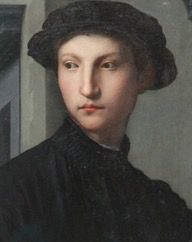


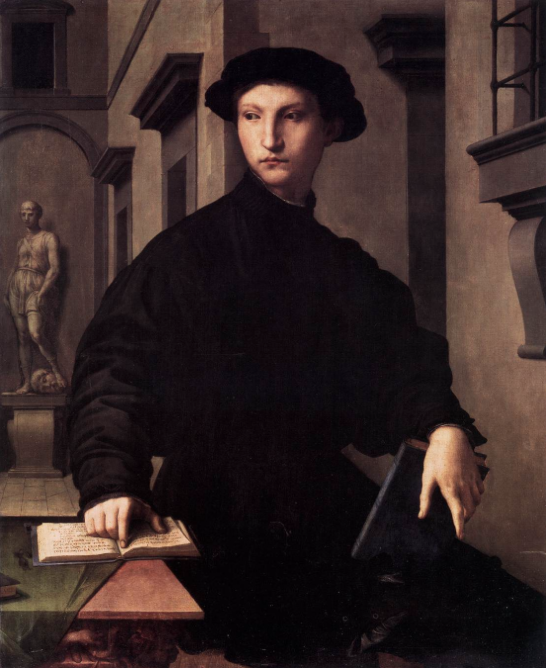
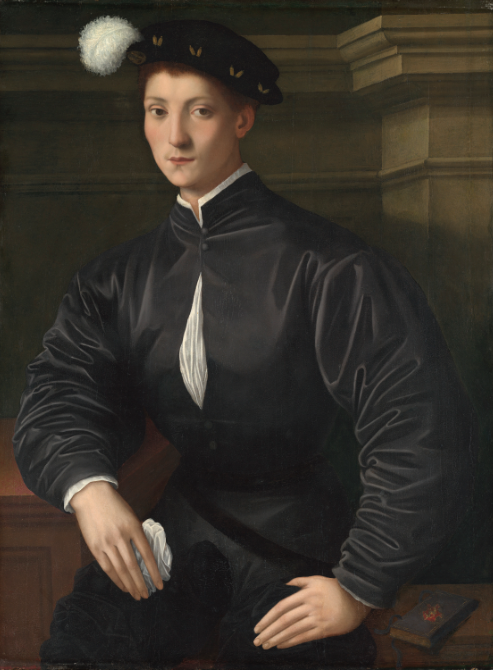
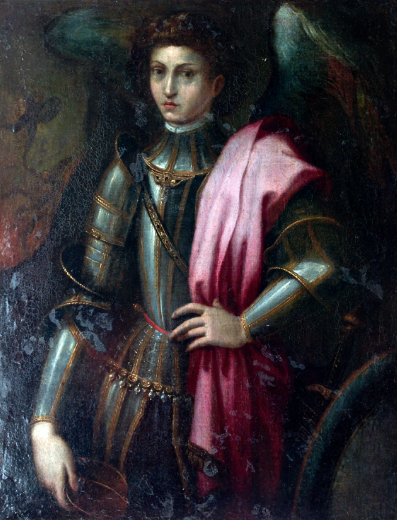

Keeping Up The Pace
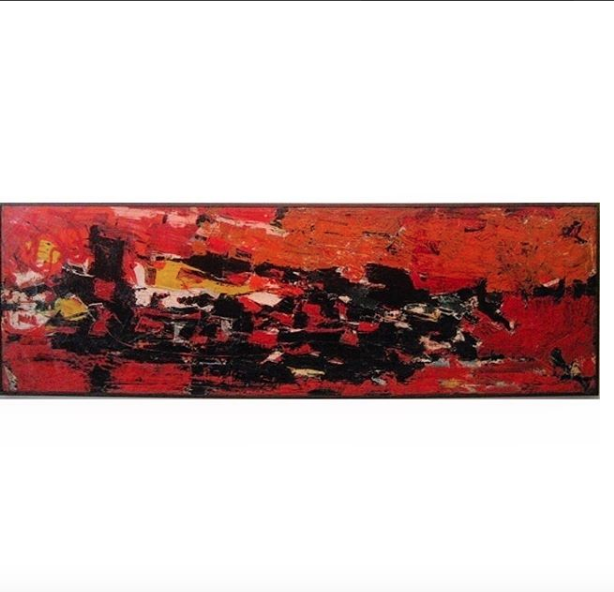
He had served his country for four years in World War II and then enrolled in art school. It was in the art school that he met Milton Avery. Years later in New York Pace would reconnect with Avery as well as study under Hans Hofmann and become friends with Willem de Kooning, Franz Kline and Jackson Pollock. You see, the 1950's in New York City was a hot bed for the burgeoning school of abstract expressionism. Mr. Pace was in the thick of it. He painted this incredible oil on canvas abstract painting in 1952. And I bought this painting some fifty five years later also in New York City. I was making the rounds to some of my favorite shopping places when I turned onto 11th Street in Greenwich Village. Walking up to the shop, the door was being propped open by something. That something turned out to be this painting. My eyes popped and and jaw dropped. I recognized the name, but I didn't buy it for that (yeah, the one time something I buy is actually signed). I bought it because it spoke to me. And isn't that why we buy art. Why we have to save art. Why we are art dealers. We are constantly seeing things in and out of context. Surely using a master work by a top abstract expressionist artist as a door stop does not present the proper context. But it is up to us to see in it the potential. And then to be the vehicle to carry the work forward. This painting is now in a private collection and I'm happy to have been part of its journey. ;-) hkv
Extra Information:
Have you ever heard that? Have you ever said that? Well, we won't be taking names, so don't worry. Maybe you've asked yourself, "what is abstract art?". Here's my take on it. It is emotional. It is strong. It is powerful. Abstract art is more than splashes of color, squiggly lines and paint splatters. It is spontaneity. It is the raw emotion of the artist presented for all who dare to look. It is the visual representation of a feeling, or mix of feelings. An artist strives to represent something without external likenesses. The thing is not represented in realistic terms, but in feelings. This is a mood. This is a movement. This is Abstract Expressionism and it has a lot to do with New York City in the mid 20th Century. The artists of this movement and time were creating spontaneous representations of emotions. These are strong works. These are the works of masters of the form. So where does a Missouri farm boy fit in to all this?
Stephen Pace was a small town boy who flipped a coin. Tails was San Francisco. Heads was New York City. That coin came up heads and Mr. Pace's life was about to change. He served our country in World War II for four years and was then entitled to four years' education. He chose an art school in Mexico. It was here that he met Milton Avery. After his schooling in Mexico, he was on his way home to the farm. Back to his roots where he had taken up drawing and painting those many years ago before he enlisted in the war. Back to his family. He paused. He reached in to his pocket while he stood in that bus depot in New Orleans and he flipped a coin. "I knew if I went back to the Midwest they'd put me to work on the farm...". That thought was all it took.
Arriving in New York City he was immediately thrown into the fast paced art scene. Studies under Hans Hofmann, friends with Willem DeKooning, Franz Kline, Jackson Pollack, mentoring under Milton Avery, trips to Europe. He made the most of his time. He was learning from the best and surrounded by the best. Stephen Pace thought back to those rural days and his figurative paintings, but he wanted to try his hand at something new. Perhaps those four years in the war had built up some emotions in Mr. Pace that needed an outlet? Perhaps he was delving deep to realize an as yet undefined goal? Perhaps he was an artist coming in to his own...
Mr. Pace's abstract works of the 1950's, during the pivotal Abstract Expressionism movement, are among his most provocative and thoughtful pieces. Explosions of color. Of feeling. Of movement. The canvas seems barely able to contain them. The brush strokes leap from the rectangle and push their ways to infinite space. They cannot be contained. They are bold and boisterous. They are real and rousing. They are abstract.
Abstract may be defined may ways by many people. Perhaps your pint sized Picasso has just created his latest fridge worthy work of art. Fantastic. Get the magnets and place it up there in between the to-do list and photo of Fido. Sure, by definition there are emotions in that art. There are bold uses of color. So, maybe your kid could paint that. But this is where we have to step back and take another look at abstract art. Rather than just saying, "Oh, I don't understand that." Take a moment and let yourself be drawn in to the piece. Look for the movement. Where does it lead your eyes? Do you gravitate back to a certain color? Are you looking beyond the canvas? These are questions that really only the viewer can answer for the viewer. Generally an artists work is seen in an exhibition or in some context of presenting an overall understanding of a period of time in an artists life. Viewing one abstract painting and summing up your ideas of abstract art, is like looking at one car and thinking you understand the entire industry. There are lots of artists out there who have lots to say.
Hear their voices in their art. Abstract art is for everyone!